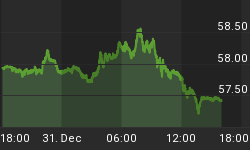When manufacturing was sinking 2000 and the US economy along with it the causes of the oncoming recession were still being hotly debated in some quarters, with very few focusing their attention on monetary factors. Regular readers know that I have continually stated that Austrian analysis amply explained the economic situation. Armed with the Austrian approach one could only predict that the Fed's loose monetary policy had made recession inevitable.
However, there is still considerable confusion regarding the role of money in causing recessions. One reader sent me a lengthy e-mail in which he argued that Ralph Hawtrey's monetary approach was superior to the "overinvestment analysis that the Austrians use". From the references he used I presume he had drawn on Gottfried Haberler's Prosperity and Depression for his information. Fortunately I too have read Haberler.
Hawtrey, an English economist, explained booms and busts in pure monetary terms. Inflationary monetary policies (credit expansion) triggers the boom causing prices to rise while depression is caused by a reduction in expenditure. (Incidentally, this was also Ricardo's explanation of the boom-bust cycle). This view led Hawtrey to argue that stabilising the price level is all that is needed to eliminate the so-called trade cycle.
Therefore the central bank can tame recession by keeping general prices from either rising or falling by simply adjusting the money supply accordingly, which really meant implementing a 'cheap money' policy. But as Benjamin M. Anderson wrote in his Economics and the Public Welfare: "Cheap money plays no such dominating role as Keynes and Hawtrey and their followers would have us believe".
What Hawtrey's supporters did not realise is that his stabilisation policies would also trigger a boom followed by a bust. His great error was in failing to understand that money is not neutral. This is why he was able to declare that "The American experiment in stabilisation from 1922 to 1928 showed that an early treatment could check a tendency either to inflation or deflation ... [and that] the American experiment was a great advance upon the practice of the nineteenth century".
And while Hawtrey was lauding the Fed's price stabilisation policy Hayek and Mises were warning that the very same policy would result in a depression. Because the Austrian school -- of which Mises and Hayek were the leading members at the time -- understands that money is not neutral they fully comprehend the microeconomic consequences of inflation.
They are the only ones to explain that expanding the money supply affects individual prices in a way that distorts the pattern of production. The effect is particularly pernicious when the monetary expansion consists largely of credit expansion, which is usually the case. Hawtrey's assumption, therefore, was that monetary expansion only affects the general price level while leaving the structure of prices unchanged.
Now Haberler greatly erred in presenting the Austrian explanation for the trade cycle as being an "overinvestment" theory. It was nothing of the kind, something that Haberler of all people should have known. As Mises pointed out in Human Action:
It is customary to describe the boom as overinvestment. However, additional investment is only possible to the extent that there is an additional supply of capital goods available.... The boom itself does not result in a restriction but rather an increase in consumption, it does not procure, [emphasis added] more capital goods for new investment. The essence of the credit-expansion boom is not overinvestment, but investment in the wrong lines, i.e., malinvestment on a scale for which the capital goods available do not suffice.
In other words, credit expansion causes relative overinvestment, meaning excess investment in some lines of production at the expense of other lines, most of which are at the lower stages of the production structure. The idea of general "overinvestment' struck the likes of Mises and Hayek as absurd -- and they were right.
The Austrians are the only school of economic thought to provide a satisfactory explanation of the trade cycle. The only one whose theory adequately explains why the boom starts in manufacturing and why manufacturing is the first to suffer the effects of an emerging recession. Manufacturing, not consumption, retail sales or the stock market, is the real leading indicator. To sum it up, Austrians would say that that though the recession had monetary roots it still consisted of real factors, something that a purely monetary explanation would ignore.
This reader also wondered whether money substitutes vitiated the Austrian theory. Not at all, is the answer. It ought to be noted that the rapid growth of money substitutes (which are credit instruments) follows rapid credit expansion. Rather than causing the boom, they are one of its misbegotten products.
When the boom finally comes to an end many of these so-called money substitutes will become virtually worthless, their claims having as much value as those issued during the South Sea Bubble by a "company for carrying on an undertaking of great advantage, but nobody to know what it is".
















